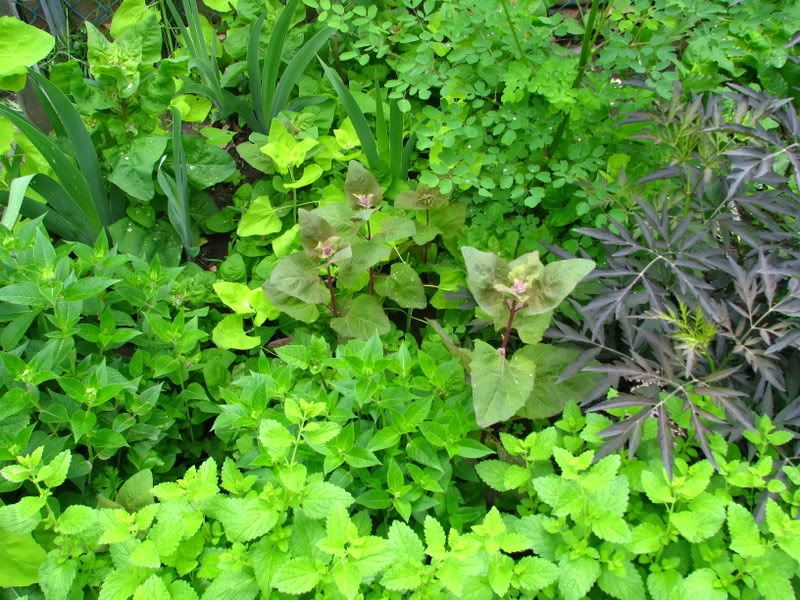
Orach, lemon balm, elderberry and friends in a part shade garden.
What the heck do you mean by shade?
Good question. A shady area can vary from getting no direct sunlight at all to being flooded in sunlight in the spring until a tree canopy leaves out into dappled shade to a garden that recieves 6 hours of sun. All of these gardens might be described by someone as shady along with many other variations. To find plants well suited to your area, you have to know exactly what kind of light you are getting: it's intensity, time (am or pm), duration, along with seasonal changes. Here are some quick and dirty catagories which I'm sure will only satisfy some of the reading audience:

Self-seeded corn salad / mache in 'woodland shade.'
Mostly sun: 6 or more hours of sunlight a day.
In this setting, you can grow most vegetables especially those that like cooler weather. It is best to have morning sun but mostly afternoon sun will work too. Avoid those that are borderline for your area because they need heat or a long growing season. You might find that some plants take a longer to mature than it says on the seed pack.
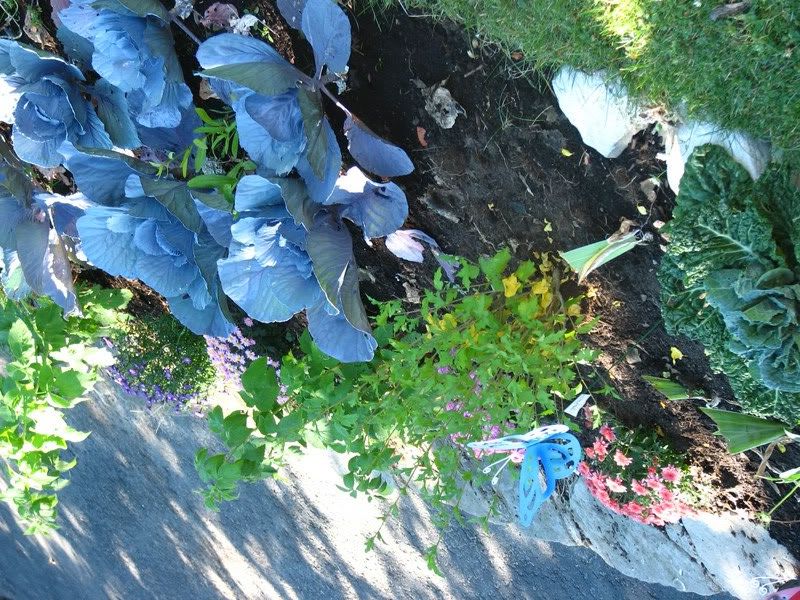
Alpine strawberries, raspberries (now I grow blueberries here) and even cabbage and lettuce that year grow in part sun, about 4 hours.
Part sun: 4 - 6 hours a day
Fruiting plants will not preform as well which includes tomatoes, and squashes etc... but most greens and roots will do fairly well. Look for varieties that are bred for short seasons and / or are eaten at the immature stage, ie. summer squash instead of winter squash.. Bush peas and beans often have a shorter growing season than their pole cousins. I have had potatoes grow very well in 4 hours sun. Jeruselum artichoke grow in our yard with about 4 hours of western sun in dry soil, and it produces abundantly. Many alliums, herbs, brassicas (chinese cabbage, brussel sprouts etc...) will thrive.
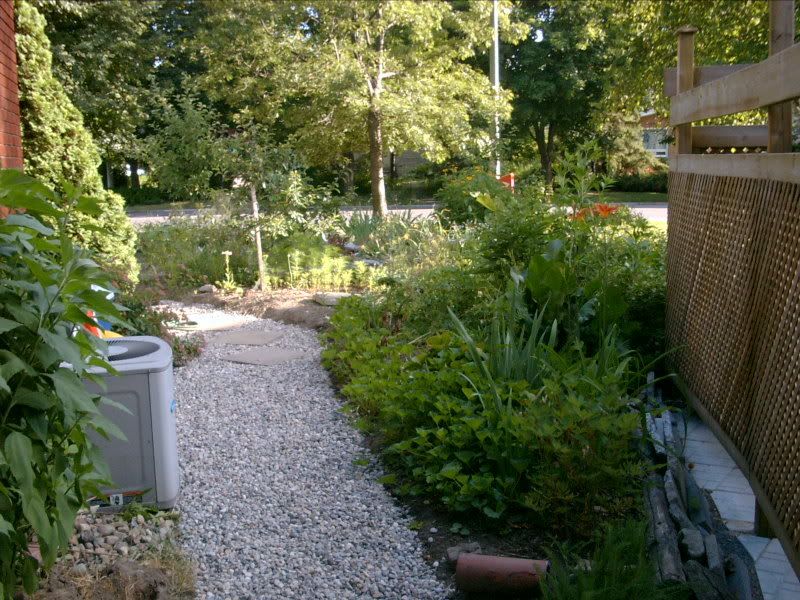
Jeruselum artichokes, egyptian onion, horseradish, daylily and rhubarb grow in limited sun on the western side of the house between two walls.
Mostly shade: Less than 4 hours - solid shade
Each hour less of sun will lower the possibility of growing traditional vegetables but in the least sun it may be possible to grow some greens that are quick to bolt like chevril, some woodland plants such as fiddlehead ferns and mushrooms. Dry shade will present further challenges.
Woodland shade - deciduous trees
If you have a spot in your garden dominated by deciduous shrubs and trees, look for edibles adapted to a woodland setting such as Giant Solomon's Seal, Sweet Cicely, Ramps / Wild leeks and claytonia. These plants are normally up early in the spring to take advantage of available light before the canopy leaves out. This is another good spot for very early spring crops like pea shoots or fast growing brassicas and a fall garden especially under a coldframe. You can even try growing early spring crops of lettuce and other vegetables that don't like the heat to see if they last longer into the summer season. For more on this subject, look into 'Forest Gardening.'
On the southern / eastern edge of your woodland site, you can plant more traditional vegetables.
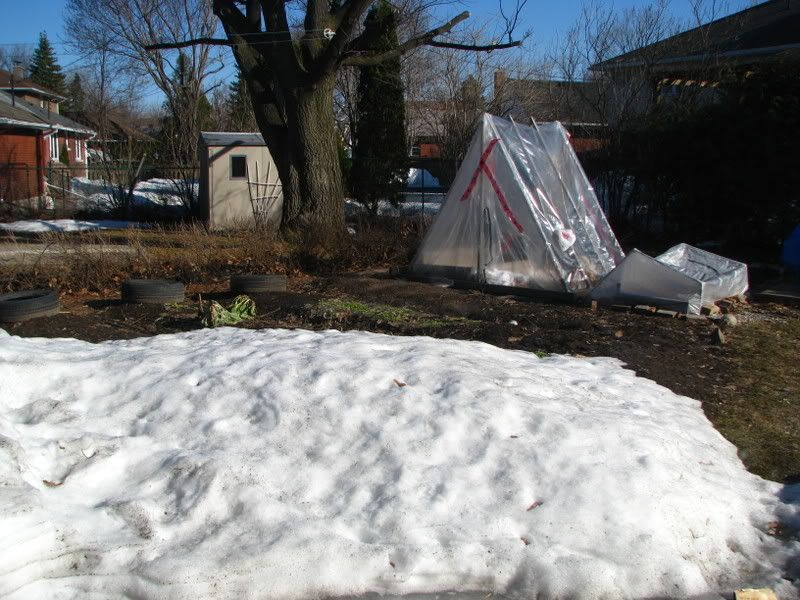
Coldframes located in full winter sun but dappled summer shade.
Techniques to increase sunlight
If you are stuck with a shady spot but would like to increase the amount of light you get, you can use several tricks. Firstly, if you can set up a reflective surface to direct some sun into the dark corner such as a light coloured wall, stone or water. If your shady spot is under a tree, you can limb it up (remove the lowest branches) or thin out the branches. Never prune more than 30% of your tree a year and really I'd do this very sparingly. Finally, always plant taller plants to the north of your patch so that they do not shade out the shorter ones.
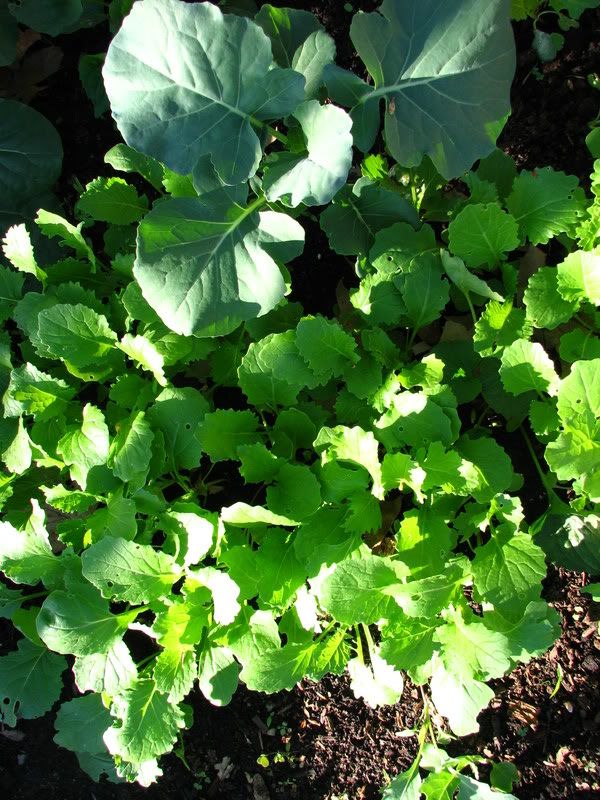
Young turnip and broccoli plants in dappled shade.
I may post some gardening plans soon.
Happy gardening!
Links
Plants for a Future - north facing walls and deep shade

6 comments:
Great post!
I'm always struggling with lack of sun in my garden.I'm so happy when I get at least 6 hours of sun. The part of my veggie garden that gets just dappled shade all year has my mint garden. Lemon balm and several different mints. They seem to be doing OK there and the lack of sun helps to keep them from getting to rambunctious.
Great post! Lots of great info friend! Keep them coming!
Very informative and well written. Thank you for sharing your passion and talent. mmn
I planted my first garden last year in full sun and this year our new house faces due east so we have little afternoon sun...Thank you for posting about the shade gardening. Hopefully my little garden patch will produce!
very helpful. thanks for sharing the info. planning on planting tomorrow.
Post a Comment